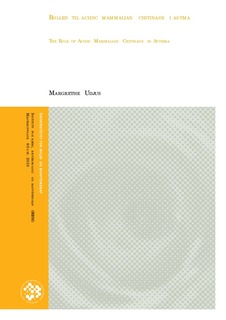| dc.description.abstract | Astma er en alvorlig lungesykdom som antas å ramme rundt 300 millioner mennesker verden over og det er stadig flere som får det. Sykdommen er kronisk og svært kostbar for samfunnet.
Acidic mammalian chitinase (AMCase) er et humant enzym som kan bryte ned det uløselige karbohydratet kitin. Det er påvist en økning av AMCase i lungeceller hos astmapasienter. AMCase produseres av epitelceller og makrofager, og induserer en produksjon av kjemokiner. Disse kjemokinene fører til en økt rekruttering av T-celler, eosinofiler og makrofager til lungene og fører til at inflammasjon og hypersensitivitet i luftveiene øker.
For å lære mer om hvordan AMCase binder til substrat og inhibitor, i tillegg til å lære mer om enzymets eventuelle prosessivitet, er det nødvendig med en rekombinant villtype av AMCase som kan dyrkes opp i store mengder, samt ulike seterettede mutanter av enzymet.
I denne oppgaven har det blitt laget to plasmider hvor tryptofanresiduer i subsete – 1 og + 3 har blitt byttet ut med alaninresiduer. Dette fører til en endring i det substratbindende setet til AMCase. Det har også blitt laget et plasmid hvor den katalytiske syren glutamat har blitt byttet ut med glutamin, slik at substrathydrolyse ikke lenger er mulig. Villtype-AMCase og én av mutantene (W99A) har blitt dyrket opp og AMCase-protein har blitt produsert.
Ved å indusere lungeepitelceller med IL-13 utvikler cellene en astmaliknende respons. Lungecellene ble dyrket i lett og tungt SILAC-medium og analysert ved hjelp av Orbitrap massespektrometri.
I to paralleller ble det funnet til sammen 2150 identifiserte proteiner, hvorav 15 var opp- og 22 nedregulerte med en Benjamini-Hochberg korrigert p-verdi på mindre enn 1 %. Det var kun to proteiner som ble funnet i begge parallellene. Det ble funnet en rekke signifikant regulerte proteiner som viste en sammenheng med astma. Flere proteiner som er involvert i kalsiumhomeostase, kollagensyntese, metabolisme og immunrespons ble funnet. Disse deltar i blant annet cellesignalisering og endring av celler og vev i luftveiene. Det ble også funnet noen proteiner som tar del i samme reaksjonsvei. Det ble for eksempel funnet to proteiner som deltar i ”hematopoietic cell lineage”, en reaksjonsvei som fører til at granulocytter, monocytter/makrofager, T-celler og B-celler blir produsert av hematopoietiske stamceller. Asthma is a serious lung disease that affects approximately 300 million people worldwide. The disease is chronic and very costly for the community.
Acidic mammalian chitinase (AMCase) is a human enzyme that is capable of degrading the insoluble carbohydrate chitin. An increased amount of AMCase is shown in the lung cells of asthmatic patients. The great producers of AMCase are epithelial cells and macrophages. AMCase induces the production of chemokines which recruit T cells, eosinophils and macrophages to the lungs. This leads to an increased inflammation and hypersensitivity of the airways. To learn more about how AMCase binds to substrates and inhibitors, in addition to learning more about any processivity AMCase might have, it is necessary to have recombinant wild type AMCase that can be produced in a large quantum, as well as different site-directed mutants of the enzyme. In this thesis two plasmids has been made where tryptophan residues in subsites – 1 and + 3 were replaced with alanine residues. This leads to a change in the substrate binding site. Another plasmid was made where the catalytic acid glutamic acid 140 was replaced with glutamine. This leads to an inefficient substrate hydrolysis. Wild type and W99A have been cultured and AMCase protein has been produced. By inducing epithelial lung cells with interleukin-13, the cells will develop an asthma-like response. Lung cells were cultured in light and heavy SILAC media and analyzed with Orbitrap mass spectrometry. In two parallels there were found 2150 identified proteins. 15 of these were upregulated and 22 were downregulated with a Benjamini-Hochberg corrected p-value set to 1 %. Only two proteins were found in both parallels.
Several significantly regulated proteins were found that might have an importance in human asthma. There were found several proteins that were involved in calcium homeostasis, collagen synthesis, metabolism and immune responses. These are involved in a number of processes, including cell signaling and airway remodeling. There were also found some proteins that were involved in the same pathways. Two proteins involved in the hematopoietic cell lineage were found. This is a pathway that leads to the production of granulocytes, monocytes/macrophages, T cells and B cells from hematopoietic stem cells. | no_NO |
